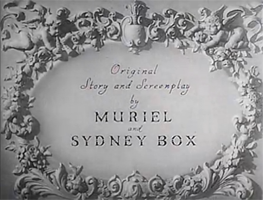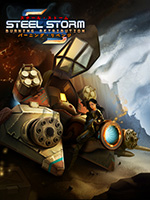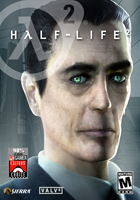

Machinarium
developed by Amanita Design (Prague, Czech Republic)
self-published October 16, 2009, for Windows/Mac/Linux, $19.99
[trailer]
[website — an in-browser playable demo, comprising the first three scenes of the game. Go for it.]
~350 MB
Played to completion in 4.5 hours, 1/28/15.
[80 min. video in 8 parts of a complete playthrough (sorry about the occasional stupid superimposed text, but the other options weren’t high resolution)]
Third of the five “Humble Indie Bundle 2” games retroactively added to my “Humble Indie Bundle 3” purchase on August 3, 2011.
First things first: how do you pronounce Machinarium? In a Czech-language interview I found on YouTube, the designer pronounces it “Mah-khi-NAH-ree-oom” (with a soft palatal “kh”). In this talk in English, he pronounces it “Mash-in-AIR-ee-um,” so that’s how I’ll be pronouncing it. This information is not easily googled! You’re lucky you have me.
This is more like it! I said games are good for the mind because fantasy is good for the mind, and this is such a fine fantasy. Care has been put into exactly what counts about games: the touch, the feel, the sound, the space. Machinarium is an adventure game and it’s entirely traditional as such (its clearest antecedents are The Neverhood and the Gobliiins series), but its aesthetic roots are in the world of art animation, stuff in the Annecy Festival / National Film Board of Canada / Academy Award For Best Animated Short tradition — which I think is a pretty great tradition: very comfortably neither high nor low, just art.
The nature of animation is so painstaking and intensive that it takes serious institutional power to make animation that isn’t loving and personal. That’s why basically all cartoons prior to around 1950 are pretty good, and almost any artsy Annecy-style short is at least interesting. Video games used to be the same way! Making them was too difficult, and too much of an adventure into the unknown, for the product not to have soul. This I think is the source of a lot of the “remember the good old 80s?” gamer nostalgia: those 80s pixels had feeling to them because they each cost; feelings really had been invested in them. For a nostalgist now to try to imitate the pixels but not the feelings, in this era when pixel-handling is simply beneath the authentic level of attention of a designer, doesn’t work.
But by going the handmade animation route, Machinarium manages to keep real feeling in it: the loving artistry of its materials can be nothing but exactly what it appears, could be made no other way. We live in a time when the technical side of a game about a cartoon robot is available prepackaged, so the only thing to care about is not the gadgetry of the game, but the cartoon robot itself. And this game cares! It’s a good cartoon robot!
Sometimes at the bookstore I like to go to the new children’s picture books and flip through them, solely because the continued show of attention to aesthetic experience is heartening. They’re not as good as they used to be — the design and typesetting side of things is frequently clueless and ugly, and a lot of illustrations make it to the stores that wouldn’t have been considered up to snuff, 30 years ago — but the spirit is still alive, there.
Adventure games and their design are one of my standard subjects for compulsive internet reading, so even though I hadn’t played this game until now, I had a pretty strong sense of it already. I was thus rather surprised not to have heard anywhere about the ingenious hint system, which I’m about to go on about.
The game is languageless in a classy internationalist way; characters express themselves only in speech bubbles containing images or cartoons. At nearly any time, there is a “give me a hint” option available, which immediately results in the protagonist issuing a speech bubble containing a hint image. That isn’t itself so innovative, though there’s something satisfyingly indirect about seeing a hint in picture form, which makes it less humiliating than reading a text hint (and less humiliation means less occasion to resent the game).
What’s really brilliant, I think, is that in addition to the hint, each screen of the game actually comes with a complete solution/walkthrough — depicted, also wordlessly, as pages in a Codex Seraphinianus-like book drawn in a charming Da Vinci notebook/alternative comics style — and access to this explicit walkthrough is available at any time… but in order to look at a page of it, one must first beat a stupid, tedious, unrewarding minigame. This strikes me as a completely ingenious solution to the spiritual (yea, spiritual!) problem posed by the need to make answers available for puzzle games. With this system, one no longer has any temptation to break out of the game and resort to the internet for answers, because attractive and official answers are always within arm’s reach, inside the confines of the game itself… but one is genuinely reluctant to seek them because it’s annoying.
Previously the only reason not to flip to the back of a puzzle book to read the answer as soon as one felt stumped was so-called “self-restraint,” which I have come to feel is actually a destructive force in the world, since it diminishes the integrity of the self and leads to resentment. If one is posed a problem, one wants to be able to throw one’s whole self into solving it! That is the pleasure of being a whole self. When the answer is right there for the looking-up, one has to partition off the part of the self that knows it, because “that’s not the point; that’s not how I’m supposed to solve the problem.” Those aren’t genuinely self-interested motivations; they’re in bad faith. (I know I’m sounding like Ayn Rand here but don’t worry it’s almost over.)
What’s wonderful about Machinarium‘s system is that it offers a completely self-interested disincentive — namely, that the process of unlocking the solution is tedious — so that one never needs to leave the zone of authentic motivation. Conquering the problem in any way you like is now organically more likely to mean actually solving it. In beating the game, I twice resorted to the walkthrough, but I felt an unashamed integrity about doing so, such as I’ve never felt before in looking up an answer. I only resorted to it when my own personal cost-benefit analysis tilted in that direction, and since the game had chosen exactly the terms of that analysis, I was able to feel that it approved of my choice and that I wasn’t being cheated — or cheating myself — out of any amount of satisfaction. “If trying to solve a puzzle without help becomes so frustrating that you feel tempted to play through the stupid walkthrough-unlock minigame, feel free to do it! We never want you to be that frustrated.”
Gauging the exact level of lameness and tedium of that stupid minigame so that this would all work out required great sensitivity on the designers’ parts. I think they did an excellent job. The minigame demands one full minute of vigilance, and offers next to no aesthetic gratification — only just enough that it uses the game-playing part of the mind. It calls on one’s memories of playing badly-balanced, irritating LCD games. Nobody wants to do that, but everyone knows they can if they have to. The decision about whether to peek becomes not “do I really want to look up the answer,” but “do I really have to play that damn game.”
This don’t-peek-at-the-answers thing has been a problem my whole life, and these guys finally solved it! Why isn’t everyone else doing this already?
The game is a Best Animated Short dream, with only just enough plot to give a sort of musical shape to the proceedings. For this reason it is able to incorporate true abstract puzzle-puzzles (sliding block, etc.) in a way that is done in lots of adventure games but usually feels much dumber than it does here. Here it makes simple aesthetic sense: this world is a game and a puzzle, so of course there are games and puzzles in this world.
The selection of what kinds of puzzle-puzzles to include has been done with taste; or, I should say, with taste that corresponds to mine. The designer is clearly like me a fan of clickmazes.com.
In googling to see if anyone else had pointed this out, I came across this tweet from Andrea Gilbert, the puzzle designer behind clickmazes.com, saying, basically, that Machinarium infringes on her intellectual property.
It’s a little bit of an unpleasant subject for me to think about ownership of such things, since a great part of the appeal of abstract puzzles is that their rules feel objective and necessary, like nature, like math. I have always enjoyed that the head-to-head social element of puzzle solving is beneath the surface, that the designer’s presence is discernible only from mysterious indications, like a ghost. Having to acknowledge that the surface rules are themselves not natural at all but overtly the designer’s doing — are arbitrary and social, and copyrighted to a single person — kind of cuts against that.
Of course I want the world to validate the makers of things I like for doing what they do. But it just feels good that puzzle types should be free, that sudoku should be free or crosswords should be free, the way it feels good that the game of baseball is free, or the idea of “brunch” is free. It gives me a good feeling of human brotherhood, and that ends up extending to the feeling I get from the cultural stuff itself, in this case puzzles. Is the vigilant defense of exclusivity rights the only way to be a part of a society that gives Andrea Gilbert “her due”? Does inventing, say, BoxUp puzzles (as seen in Machinarium) really need to give her exclusive authority over the future of BoxUp puzzles? Isn’t it simply that she has birthed something good into the world and thus deserves to be treated well by the rest of us, who benefit? And isn’t it natural for us to want to? And aren’t there many ways of treating a person well? Of using that natural fellow-feeling as the source of our social decency, rather than enforcing that decency by prohibitions on our enthusiasm for taking up one another’s work? (Am I starting to sound like a communist? I thought you said I sounded like Ayn Rand! Make up your mind!)
It’s a complicated subject, at least for me, and that it arises in a sweet-natured game like this accentuates the difficulties. The pleasure of a work like Machinarium is in entering a mystically asocial space, in which the benevolence and hostility of the world needn’t be described in terms of interpersonal misunderstanding but are simply facets of individual subjective experience. Abstract puzzles, as I said, fit nicely into that existential mode. It is very important to me to hold to the idea that this innocent world of sensation is compatible in its substance with real life, and doesn’t simply need to be shuttled around like currency, defended by professional lawyers.
Of course, I say this because Machinarium is a nice game, made well. Meanwhile there are thousands of quick-and-dirty clones of original puzzle designs to be found in the iOS App Store, and those do seem to me exploitative and unworthy. To be an idealist is to be irrational, and I accept that. My irrational gut tells me that Machinarium has a couple of BoxUp puzzles in it because BoxUp puzzles are and should be free; whereas meanwhile a direct clone of Andrea Gilbert’s BoxUp app is sleazy and she deserves protection against it. And my irrational gut will not be denied, because it is me and I am it.
The soundtrack is great. This is the first game since L.A. Noire where I came away actually wanting to sit and listen to its soundtrack album.
In these entries about games, I haven’t been talking about the music, even though incidental music is one of my fixations. It just happened to work out that way. Half-Life has effective enough scoring in a “kick ass and rock out” style, but nothing really interesting to me on its own terms, and then Opposing Force and Half-Life 2 and its sequels follow in the same vein. Crayon Physics, as I mentioned, had just three pieces of weak-tea music. Hammerfight‘s soundtrack is 8 minutes of eccentric homebrew Slavic exoticism; not bad. Steel Storm‘s soundtrack sounded like what I would have written for it had I been given the assignment in college, which is to say, a conscientious amateur impression of Star Trek music; it’s okay, though it doesn’t exactly blend with the action. Cortex Command has very competent, confident “post-nostalgic/post-chiptune” indie game underscore that, like Half-Life, wisely hangs back so as not to become irritating but thereby also never really becomes interesting.
Which is fine, of course. Movie music tends on the whole to be more independently interesting than game music because it only has to accompany one moment at a time and thus can make stronger choices; game music has to withstand being heard hundreds of times under varying dramatic circumstances, so generally it can’t afford to have too strong a profile. If you’re the type who deliberately chooses music for its mood-altering function, game music is a pretty rich area to explore.
Anyway, I think Machinarium has a superb score (by Tomáš “Floex” Dvořák). It consistently worked both ways for me: as something carefully crafted and interesting to listen to, and as effective mood-altering background. The game is its atmosphere, and the music is fully half of that. Its catchier passages work with musical ideas that have been hip in the past 15 years, but this Prague hipsterism never gives me a sense of posturing self-portraiture, the way so much Brooklyn music in the same vein does. Nor does the, shall we say, “philosophical” ambiance of the Thomas Newman-derived stuff feel spiritually contrived, the way it usually does to me when I hear it in movies these days. I think Europeans are just generally less anxious as people and as artists, and somehow the purity of the intention comes across. There’s a classical mindset underlying the vibe, which makes all the difference to me.
Here’s a version (missing the last track) on SoundCloud and on Spotify, where unlike the composer’s store page above, the whole album will play continuously once you start it. (Or here’s the fullest possible version, on YouTube.)
Design and Direction: Jakub Dvorský
Graphic Art: Adolf Lachman
Music: Tomáš ‘Floex’ Dvořák
Animation: Václav Blín (with Jaromír Plachý)
Programming: David Oliva (with Jan Sušek)
Sound Design: Tomáš ‘Pif’ Dvořák
That’s basically it. Good show, guys! Thanks for a lovely 4 hours. And then a less lovely 4 hours grinding out this entry, but that’s my fault.




















 (Collect all 3 covers!)
(Collect all 3 covers!)

